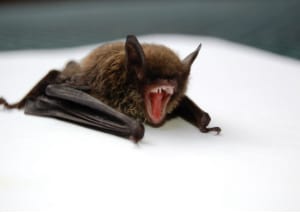In general, bats are beneficial flying mammals that control populations of insects on sites. In most cases, we don’t notice them as they are nocturnal animals.
However, if migrating bats invade your attic, you won’t be pleased at all. They can be really noisy and produce huge piles or fecal pellets near the roost area. Close proximity to bats can lead to contacts with bat poop that is really dangerous for both people and pets because of bat-transmitted diseases.
Animals and children may also touch a bat if they get interested. Such a meeting has very high chances to end up with rabies, so you have to deal with such infestations as fast as possible.
Bat Guano: Easy Extermination Guide
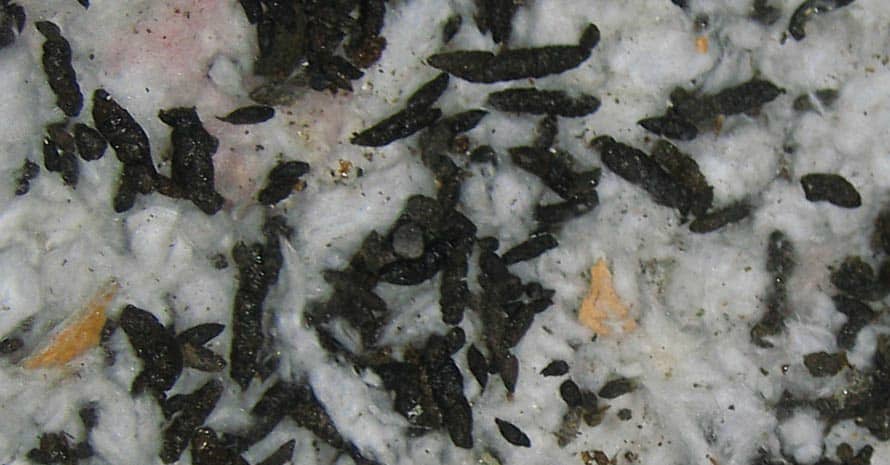
In this guide, I share all the important facts about bat scat along with bat poop images. Read it attentively to be ready to deal with a problem proactively. Still, I don’t recommend fighting with an infestation without professional help as it’s risky.
What does bat poop look like?
Bat scat is usually dropped from the roosting point on your roof. They accumulate in large black piles. Single pellets look like long thin granules with a shiny and speckled coloring.
That’s because most bats eat insects, and their wings don’t break down completely in the digestive system. You can see how they look on the bat poop picture or google for more.
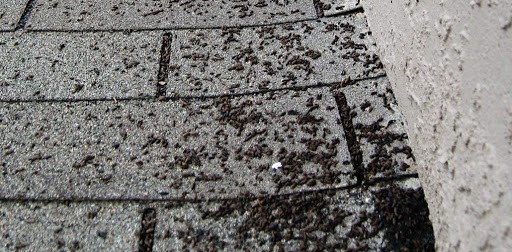
What disease can you get from bat poop?
Bat droppings disease list isn’t very long, but is really hazardous. It includes 3 dangerous diseases, such as rabies, histoplasmosis, and a wide range of ectoparasites, including fleas, flies, mites, true bugs, chiggers, and ticks.
While bat parasites rarely change their host and catch on humans or animals, rabies and histoplasmosis are extremely dangerous and can be lethal.
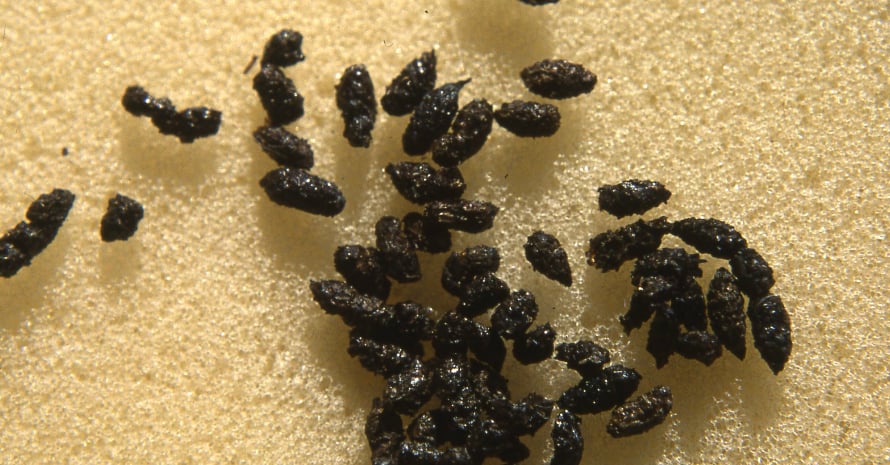
Both of them can affect humans and pets, so be ready for recognizing histoplasmosis in pets to start treatment on time in case of intoxication. Even though it’s a rare disease in the US, you are very close to it if you have a bat infestation.
Rabies is a much more common disease that’s very easy to catch through bat guano. The percentage of infected bats is usually below 1%, but you never know which of them is infected and the consequences can be very hard.

How to clean bat droppings?
Given that bat poops can contain dangerous diseases, you should protect all your body areas that can be infected through the dust. These include eyes, nose, mouth, and hands as you may touch guano by accident. I recommend wearing:
- thick latex or gardening gloves to avoid skin contact with poop;
- Full-face HEPA respirator;
- Disposable coveralls;
- clothes with long sleeves and pants.
If you call a team of professionals to solve the problem, they will most likely use a powerful filter vacuum. You probably don’t have it and will scoop feces into plastic bags.
In both cases, it’s important to wet down the piles to reduce the amount of dust. Believe me, this material gets very dusty when you disturb it! Add 10% bleach to the spray for better effect and keep spraying it every 5-10 minutes to maintain a low dust level.
When the work is done, you have to close the bags tightly to prevent the dust from getting out. It’s also recommended to figure out bat guano disposal requirements in your area. You might be required to bring the bags into special locations or bury them on the required depth to prevent the infection spreading.
It’s also necessary to clean all the equipment thoroughly and get rid of disposable gear. When the work is done, seal all the entrances to the attic with silicone, sheet metal, wood, or plastic. If the airflow is needed, use metal mesh instead.
[su_note note_color=”#e5e2d4″]Related post: Recommended bat repellents [/su_note]
How to check for infestation?
There are several signs that may say that there’s a bat problem. They include:
- Bats flying around – if bats fly around your property during sunset and sunrise, it can be a sign that they live very closely;
- Ammonia scent – large bat poop piles have a strong ammonia smell. This means that the problem requires immediate treatment;
- Dead bats – a true sign that a bat family is somewhere near;
- Stained entrances – when bats find an entry hole into your house, they start using it frequently, and it covers in black stains;
- Bats inside the house – it’s an alarm that says hurry up;
Squeaking sounds and strange noises – same as bats inside;
Although I recommend calling for professional help, you should apply standard bat management techniques as well.
FAQ on Bat Poops
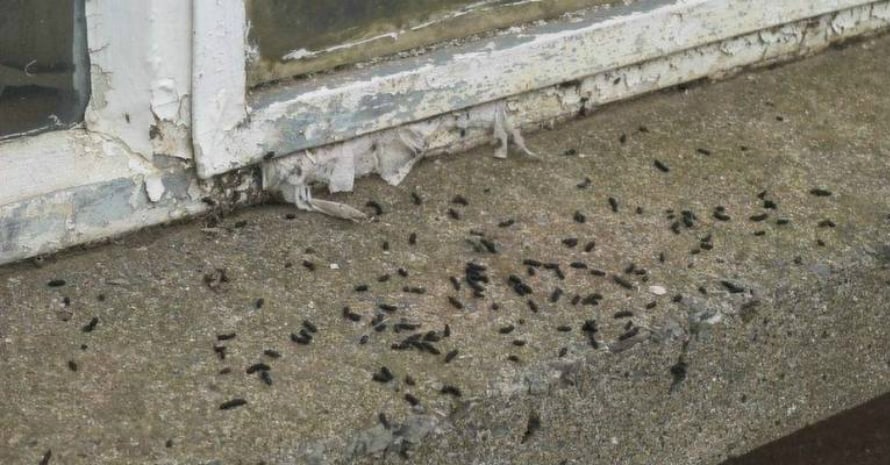
Here I gather answers to some of the questions that my readers ask about bat guano most frequently. Don’t skip this section as it includes some important facts that will help you deal with a bat infestation.
Where do bats poop?
Bats build up strong habits and love to roost together in one and the same place every day. In most cases, they leave feces on entrance holes to their place.
What color is bat feces?
Bat excrement is thin black pellets. They accumulate into piles over time, so it’s quite easy to tell bat roosting from nests of other pests.
What is bat poop used for?
In gardening, bat dung is used as a powerful soil enricher. However, it can be used if it belongs to insect-feeding and fruit bats. Bat guano tea is used for watering plants and deep root fertilization.
Is bat poop toxic?
Bat excrements can contain dangerous parasites and diseases, including histoplasmosis, and rabies, both of which can be lethal if your immune system isn’t strong enough.
Take Care!
Now dealing with a bat infestation will be much easier for you. If you don’t feel like doing this or you don’t have all the needed stuff, you should call a professional pest controller to solve the problem without mistakes and injuries.
Have you ever found bat feces in your household before? Was it an infestation or randomness? I’d be happy to see your story and feedback on my guide in the comments section below. You can also start a conversation with me if you have questions and need professional advice. For more guides on pest excrement and infestations, stay on my blog.
References:
- Recognizing histoplasmosis in pet dogs and cats (Oklahoma State University):
https://news.okstate.edu/articles/communications/2019/recognizing_histoplasmosis_in_pet_dogs_and_cats.html - N95 Respirators (HEPA or High-Efficiency-Particulate-Air Filter Respirators) as Personal Protective Equipment (PPE) (University of Iowa Health Care):
https://medicine.uiowa.edu/iowaprotocols/n95-respirators-hepa-or-high-efficiency-particulate-air-filter-respirators-personal-protective - Bat Management – What everyone should know (Texas A&M AgriLife Extension):
https://schoolipm.tamu.edu/files/2019/01/bat-management.pdf

